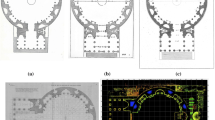Abstract
An important artistic topic of Italian Renaissance painting was the rendering of the human figure. As leading actors in a painted narrative, figures had to convince beholders of the reality of the matter depicted with appropriated attitudes and gestures. This article is about two ways of drawing or rather constructing the human figure artists developed to achieve this goal. The first was only an adaptation to an old method: because of the rather simple and coarse elements used, constructions often resulted in faulty pictures and were for that matter often criticized. As this article will show, the second method involved a new and very successful drawing skill, which not just required a different kind of knowledge of visual forms but of procedures of moving the hand, too.
Similar content being viewed by others
Author information
Authors and Affiliations
Additional information
This article is a summary of the central thesis of my dissertationSporen van vaardigheid. De ontwerpmethode voor de figuurhouding in de Italiaanse tekenkunst van de renaissance, Abcoude 1991, which was published only in Dutch. I would like to thank A.Gasten for her help in translating the text of this article.
Rights and permissions
About this article
Cite this article
van den Akker, P. “Out of disegno invention is born” — Drawing a convincing figure in Renaissance Italian Art. Argumentation 7, 45–66 (1993). https://doi.org/10.1007/BF00735042
Issue Date:
DOI: https://doi.org/10.1007/BF00735042




